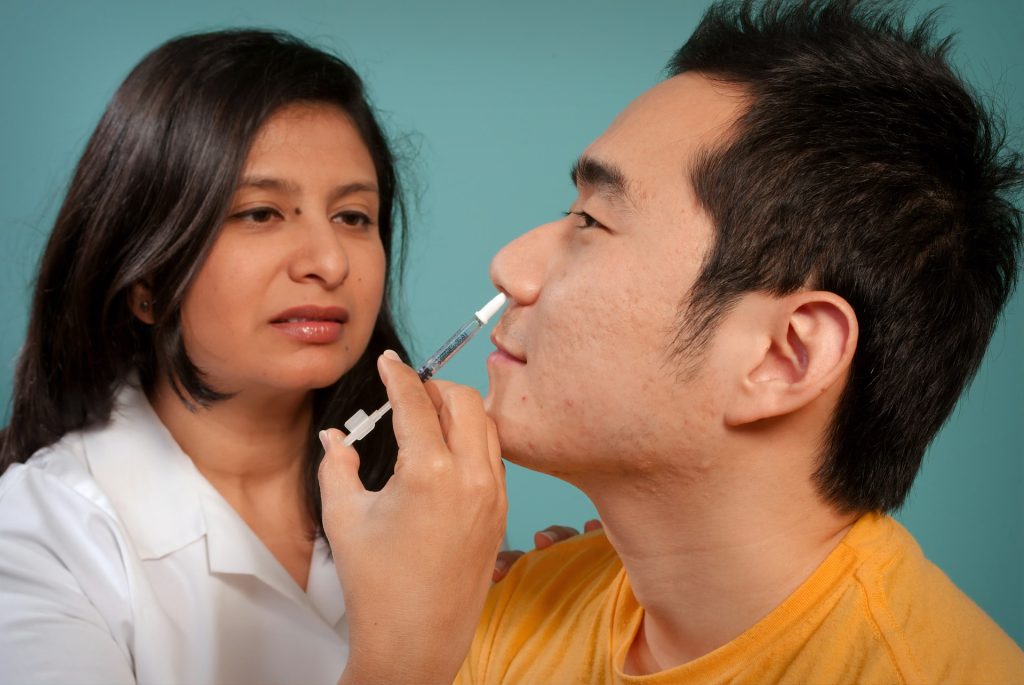Opinion: This Court Case will Literally Determine whether Some People Get to Breathe

By Aneesa Adams for Spotlight
In a pivotal case for access to affordable medicines in South Africa, the Treatment Action Campaign (TAC) and Doctors Without Borders (MSF) Southern Africa – represented by SECTION27 – earlier this year came together to help champion access to lifesaving new cystic fibrosis treatments.
Cheri Nel, a South African woman living with cystic fibrosis, and the Cystic Fibrosis Association started legal action against Vertex Pharmaceuticals earlier this year, challenging Vertex’s monopoly on the treatments. The TAC and MSF approached the court to be joined as amici curiae. Vertex, an American pharmaceutical company, holds the patents for both Trikafta and Kalydeco – medicines that have the potential to significantly improve the lives of cystic fibrosis patients. However, at a price of US $311 000 per year per patient in the United States (over R5 million), it is out of reach for most people living with cystic fibrosis.
The court application is for a compulsory licence, which, if granted, will mean another manufacturer of generics for Trikafta and Kalydeco would be permitted to enter the South African market. In this case, it is likely that competition between manufacturers would affect the price of this medicine, thus making it more accessible. A compulsory licence allows the holder of the license to produce a patented product without the patent holder’s consent.

Spotlight previously reported that Nel’s lawyers argued that by failing to register or supply their CF medicines in South Africa, make them available in South Africa at reasonable prices, or license other companies to supply the medicines, Vertex is abusing its patents. They further argued that Vertex’s actions are violating the Constitutional rights of people with cystic fibrosis in South Africa, including the right to health care. (Spotlight previously reported on the issue here, here, and here.)
Cystic fibrosis is a devastating multi-system illness known for causing frequent and severe lung infections, liver and pancreatic damage, lung failure, and can result in the potential need for lung transplants even in children from as young as two years old.
This case will set an important precedent that can influence access to medicines not only in South Africa but around the world. The involvement of SECTION27, where I work, underscores the broader issue of affordable access to medicines and the impact of intellectual property on healthcare access.
At present, MSF and TAC are awaiting the court’s decision to be admitted as friends of the court, while in the main application, the respondent (Vertex) has filed answering affidavits.
And while the clock is ticking in the courts, many families in South Africa are waiting and holding on to the glimmer of hope access to this medicine represents. For many who live with cystic fibrosis, a successful outcome of Nel and the Cystic Fibrosis Association’s application will mean a life where they can breathe easier.
Among those waiting is 6-year-old Janco Koorts.
A journey of hope
His mother, Tanya Koorts, says living with cystic fibrosis is like fighting every day for every breath. She says Janco had been diagnosed with cystic fibrosis at the age of two. She has since been on a mission to raise awareness about this life-threatening disease. It is hope, her family, and the support from the cystic fibrosis community that has kept her going, she says.
Reflecting on the start of their journey in the Northern Cape, she says, “The knowledge about cystic fibrosis is very little. We were lucky that Dr Jooste at the Kimberly public hospital diagnosed him so early on. After that, he sent us to the Red Cross Hospital in Cape Town and so our long journey of hope started.”
Later in a new job in a new city, the Koorts began again in Pretoria. They started Janco’s treatment at the Steve Biko Academic Hospital and then moved to the Charlotte Maxeke Johannesburg Academic Hospital.
“They don’t have much, but they do everything they can there to help. They also don’t have a lot of support but the people at Charlotte Maxeke helped Janco on his journey to stay breathing,” Koorts says, applauding the public health system.
Janco now has comprehensive medical aid which covers his monthly R48 000 medication bill and Koorts says she can now “breathe easier”. That, however, is just a fraction of the cost of living with cystic fibrosis.
When the Koorts family heard about Trixacar, a generic version of Trikafta, it only strengthened their resolve to save Janco’s life. The patent rights registered by Vertex Pharmaceuticals in South Africa, however, do not allow for the import of Trixacar. Trixacar is produced by the pharmaceutical company Gador in Argentina. Koorts will thus have to travel to Argentina to buy the medicine. This will cost about R400 000 to cover the travel costs and six boxes of Trixacar that will last six months, she says. (You can help the family fund this by donating here.)
‘a thief of joy’
Apart from the financial burden, having a young child with cystic fibrosis has affected the Koorts family mentally and emotionally.
“Cystic fibrosis is a thief of joy. Nobody speaks about fighting to save someone’s life,” says Koorts.
She says her family had to adjust to some of the social changes in their surroundings as well.
“At school, he has to fight for himself to stay alive. If we go to a restaurant and there are people smoking, it affects him and we have to move. So, as much as we have tried to give Janco a normal childhood, these social aspects will always hinder progress, and he is always reminded that he is sick. But I live in hope and so does he.”
In terms of her family relationships, Tanya says that her other children are healthy and for them to see their baby brother suffering every day hurts them.
“It’s painful as parents. Janco needs all the attention. I can’t go to a parent’s evening for my other kids. It’s difficult,” Koorts says.
She says she is proud of Janco.
“My child doesn’t know that he is dying. We fight every day so that Janco can have just one more breath.”
And that is ultimately what it is all about. From one perspective the exchange of documents in the High Court may seem abstract and full of legal technicalities. But let there be no doubt, for kids like Janco it is literally their futures that are being decided.
*Adams is a communications officer at SECTION27.
NOTE: This opinion piece was written by a staff member of SECTION27. Spotlight is published by SECTION27 and the TAC, but is editorially independent – an independence that the editors guard jealously. The views expressed in this piece are not necessarily those of Spotlight.
Republished from Spotlight under a Creative Commons Licence.
Source: Spotlight






